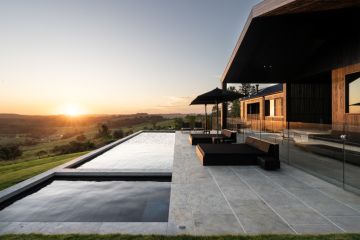How to work out how much your renovation will cost

One of the greatest fears for anyone about to embark on a renovation is going over budget. It’s a fine balance to get the look you’ve been dreaming about and sticking to your probably-not-unlimited budget at the same time. I’m big on establishing budgets early on in a project, because if there’s not enough money in the budget, all the best ideas will just go to waste.
I’ve heard of budget blow-outs often and they come in the form of $1000-$2000 at best, and incredibly, upwards of $50,000 or more at worst – even on a cosmetic renovation.
But they can be avoided. Consider these four tips when pricing up your next renovation;
1. Be aware of hidden costs
Renovations always cost more than you expect, especially if you’re new to renovating. Without the benefit of experience, you may not have the foresight to anticipate the knock-on effects of your renovations. I call these things “Periphery costs”; extra costs that will inevitably crop up, but are not main factors in the renovation. They are a reality – and the extent to which someone will go over budget, I believe, is in direct proportion to their level experience.
For example, I had a client recently who had put together some preliminary pricing on his renovation before he engaged me. He allowed $x for some tiling, $x for new taps, $x for new shower screen, vanity, mirror and so on. His total came to around $5000. However, when we talked more about the renovation, I estimated the cost to be closer to $8000-plus for the things he wanted to do. He was unaware of the periphery costs that were going to be inevitable on his renovation. In fact, I changed things a bit (after he engaged me for assistance) and we ended up at $6500 with a really fantastic end result. The best thing you can do to avoid under-estimating renovation costs is to get a professional or experienced renovator involved early on; someone who has a good idea of what the real costs are likely to be and can help you put some cost estimate figures together.
2.
Pick your priorities
Usually we have more things on our renovation wish-list than our budget can provide for, so prioritising your must-haves and like-to-haves, is critical.
Start by thoroughly articulating what you want to do to your property, right down to which kitchen sink, cabinet handles you want and so on. Then get pricing on your must-have items first; then on your like-to-have items if you have any money left over. A well designed renovation where your “spend” is cleverly allocated around the property on must-haves and like-to-haves means a complete and cohesive renovation, regardless of the compromises. Be sure to visit my website to see some fabulous examples of this in action.
3.
Get savvy about quotes
Tradies not turning up is the bane of many renovators lives. The reason they often don’t turn up is because they’re off doing actual fee paying work and are sick of being “shopped around” by potential clients.
Sourcing reliable tradies and good business people (who turn up) is best done via friends, family and colleagues, rather than off the internet or in your local rag. Mention your referee by name to the tradie or business person so they feel that little bit more committed to you (because they don’t want to let the referee down). With preliminary cost estimates as described above already on hand, you won’t necessarily need three quotes. If the quote comes in about right and the business or person you’re about to deal with comes highly recommended, then that’s as good a start as any.
4.
Stop your renovation costs spiralling out of control
During the renovation, it’s critical to monitor and manage your budget on a daily basis. Yes, daily!
It might sound over the top, but it’s the only way to nip problems and project over-spends in the bud before they get out of control. Even an Excel spreadsheet or similar will do the trick. For each item/trade, record: 1. Estimated cost; 2. Approved quote amount; 3. Variations (changes to the quote due to changes or problems on site) and 4. Final invoice amount. As variations occur, modify your spreadsheet accordingly and identify ways you can trim costs in other areas to keep your budget on track.
Jane Eyles-Bennett is renovation mad and has been a professional designer for 23 years. She was a renovation designer on the TV series Property Climbers, winner of several interior design awards and design consultant to over 600 property owners in the past nine years.
Have a renovation or design question? Contact Jane at jane@hotspaceconsultants.com or via her website.
We recommend
We thought you might like
States
Capital Cities
Capital Cities - Rentals
Popular Areas
Allhomes
More







